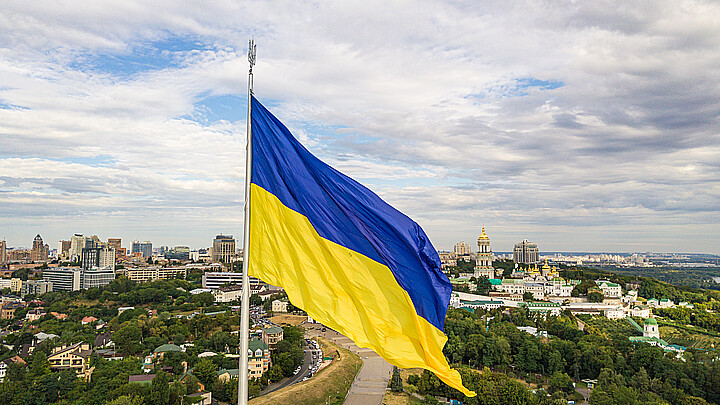Trending
Russian nuclear bomber spotted flying near Ukraine border
The Tupalev TU-160 “Blackjack” heavy strategic bomber was seen in the skies over Kaluga, a city in western Russia
April 18, 2022 1:09pm
Updated: April 18, 2022 1:57pm
Russia’s supersonic nuclear bomber was spotted over in the sky between Moscow and Ukraine on Monday, marking another military escalation by Russian President Vladimir Putin.
The Tupalev TU-160 “Blackjack” heavy strategic bomber was seen in the skies over Kaluga, a city in western Russia, accompanied by other fighter planes and a refueling tanker, possibly a Ilyushin II-78.
❗️4 strategic bombers in the sky over Kaluga. 1 hour ago
— ТРУХА⚡️English (@TpyxaNews) April 18, 2022
We have recognized the Tu-160 (a supersonic bomber, judging by the variable geometry of the wing), and the first possibly Il-78 tanker aircraft. pic.twitter.com/O0i3XgUXtJ
The nuclear bomber’s flight may signal are escalation of Moscow’s nuclear posturing after the sinking of its flagship, Moskva, in the Black Sea last week.
Ukrainian President Volodymyr Zelensky told CNN on Sunday that he is concerned about the possibility of Russia using a nuclear weapon.
Dubbed as the White Swan (Belyj Lebeď) for its distinct variable sweep-wing design, the TU-160 was commissioned during the Cold War but still the largest and fastest supersonic bomber in service today. It was developed before Moscow decided nuclear warheads were easier to deliver with inter-continental ballistic missiles (ICBMs).
Its gigantic wings span more than half a football field (54 meters) and can be extended between three positions – open at 20 degrees to maximize lift, 35 degrees for cruising, and tucked back to 65 degrees to reach its maximum speed of Mach 2.05.
Four powerful Kuznetsov NK-32 afterburning turbojet engines – the largest on any combat aircraft – kept the 129-ton bomber (empty, without payload) in the air. The Blackjack has a combat range up to 7,500 miles, which can be extended by refueling mid-flight.
The White Swan can carry up to twelve Kh-55 cruise missiles with 250-kiloton nuclear warheads and is painted white to reflect thermal radiation from a nuclear blast. It can also carry a more conventional payload of 24 Kh-15 ballistic missiles, intended to target carrier strike groups.
When the Soviet Union collapsed in 1991, 19 of the 36 TU-160s built were based at Pryluky Airbase in Ukraine, and thus grandfathered into the new Ukrainian Air Force. However, maintenance was too expensive for the country, so they sold eight back to Moscow and scrapped the rest, save for one which is on display at the Poltava Museum of Heavy Bomber Aviation.
The Russian Air Force continues to invest in the capable but aging planes, modernizing them with new engines and electronics.








